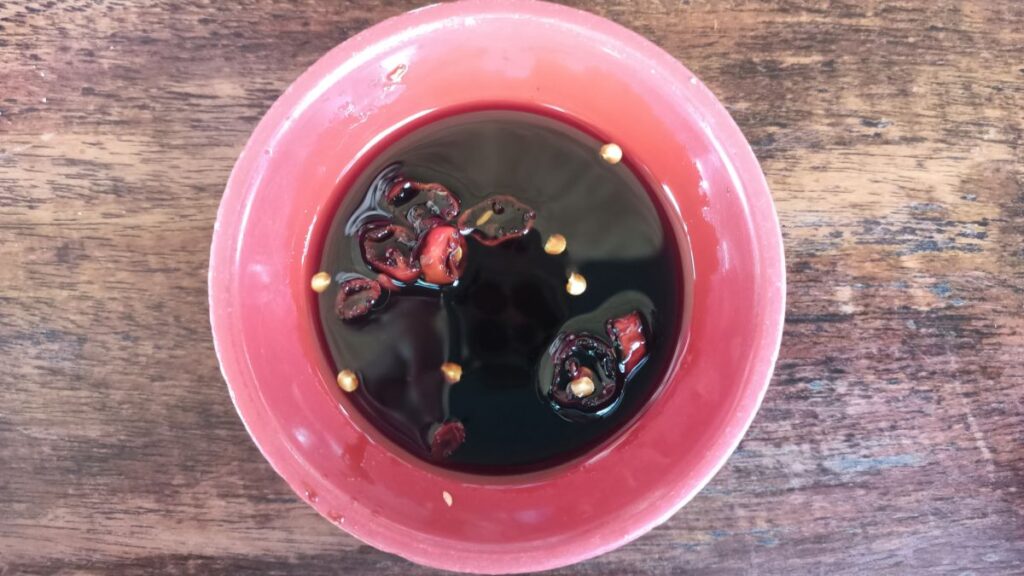13 Asian Condiments Transforming Global Cuisine
Asian condiments have gained worldwide popularity for their bold flavors and versatility. These sauces, pastes, and seasonings bring unique tastes to dishes, turning even simple meals into culinary masterpieces. From sweet and savory to spicy and tangy, these condiments are now pantry staples for chefs and home cooks alike.
Whether you’re cooking stir-fries, marinating meats, or experimenting with fusion recipes, these condiments are must-haves. Here’s a closer look at 13 Asian condiments that are making waves across the globe and why they deserve a place in your kitchen.
Soy Sauce

Soy sauce is one of the most iconic Asian condiments and a cornerstone of many cuisines. Made from fermented soybeans, wheat, and salt, it delivers a rich umami flavor that enhances a wide range of dishes. It’s perfect for marinades, stir-fries, dipping sauces, and even salad dressings.
Dark soy sauce offers a deeper flavor and color, while light soy sauce is milder and more versatile. Its global appeal has made it a staple in kitchens everywhere, beyond Asian cooking. Low-sodium versions are also available for those watching their salt intake.
Fish Sauce

Fish sauce is a pungent, salty liquid made from fermented fish or krill. Common in Southeast Asian cuisines like Thai and Vietnamese, it adds a deep umami flavor to soups, stir-fries, and sauces.
While its strong aroma might be intimidating, just a splash can transform a dish. It’s also a key ingredient in famous recipes like pad Thai and green papaya salad. Mix it with lime juice, garlic, and chili for a quick dipping sauce. Once you get used to its taste, it’s hard to cook without it.
Hoisin Sauce

Known as “Chinese barbecue sauce,” hoisin sauce is a sweet and savory condiment made from soybeans, garlic, vinegar, and sugar. It’s widely used in marinades, glazes, and dipping sauces, especially for roasted meats.
Hoisin adds a rich, slightly smoky flavor that pairs well with pork, chicken, or tofu. It’s also a key ingredient in Peking duck and a tasty addition to spring rolls. You can even use it as a base for stir-fry sauces or to enhance noodles. Its versatility makes it a must-have for any kitchen.
Sriracha

Sriracha is a Thai chili sauce that has become a global sensation. Made from chili peppers, vinegar, garlic, sugar, and salt, it delivers a perfect balance of heat and sweetness. This bright red sauce is beloved for its ability to spice up anything from eggs to noodles.
Its popularity has sparked countless spinoffs, including Sriracha-flavored chips and snacks. Whether drizzled over pizza or mixed into ketchup, it’s a versatile way to add heat to your meals. It’s often found on tables worldwide, not just in Asian households.
Miso Paste

Miso paste is a Japanese condiment made by fermenting soybeans with salt and koji (a type of fungus). It comes in various colors, from white (mild and sweet) to red (rich and bold). Miso is the star ingredient in miso soup, but its uses go far beyond that.
You can whisk it into salad dressings, glazes, or marinades for a punch of umami. Miso butter, made by blending miso with softened butter, is a trendy topping for everything from roasted vegetables to grilled meats. Its complexity makes it an exciting addition to many dishes.
Gochujang

Gochujang is a Korean chili paste made from chili powder, fermented soybeans, rice, and salt. It’s thick, spicy, and slightly sweet, with a fermented depth of flavor that enhances soups, stews, and marinades. Gochujang is a key ingredient in classic Korean dishes like bibimbap and bulgogi.
It’s also becoming popular in fusion dishes like tacos and burgers. Mixing it with sesame oil and rice vinegar creates a quick, flavorful sauce for dipping or dressing. Its bold flavor makes it a standout in any recipe.
Oyster Sauce

Oyster sauce is a thick, glossy condiment made from oyster extract, sugar, and soy sauce. It’s a staple in Chinese cuisine, known for its ability to add a savory depth to stir-fries and noodle dishes. Despite its name, it doesn’t taste fishy; instead, it provides a rich, slightly sweet umami flavor.
Use it to season vegetables, meats, or rice dishes for an instant flavor boost. Many brands now offer vegetarian versions made with mushrooms. Its versatility has made it a favorite for home cooks worldwide.
Sesame Oil

Sesame oil is a fragrant oil pressed from toasted sesame seeds, commonly used in East and Southeast Asian cooking. It’s often used as a finishing oil rather than for frying due to its strong, nutty aroma.
A few drops can elevate soups, stir-fries, or dipping sauces. It’s also a popular ingredient in salad dressings and marinades. Its unique flavor pairs well with soy sauce, ginger, and garlic. Light sesame oil is better for cooking, while dark sesame oil is used for seasoning.
Tamarind Paste

Tamarind paste is made from the pulp of the tamarind fruit and has a tangy, slightly sweet flavor. It’s widely used in Southeast Asian and Indian cuisines to add acidity and complexity to dishes. Tamarind is a key ingredient in pad Thai sauce and many curry recipes.
It also works well in chutneys, marinades, and even cocktails. A small amount goes a long way, so it’s best to start with less and adjust to taste. Its unique flavor has made it a sought-after ingredient in fusion cuisine.
Chili Oil

Chili oil is a spicy condiment made by infusing oil with chili peppers and spices. It’s a common topping in Chinese, Thai, and Korean cuisines, adding heat and flavor to noodles, dumplings, and stir-fries. Some versions also include garlic, Sichuan peppercorns, or fermented soybeans for added depth.
The heat level can vary depending on the type of chili used. Chili oil has become a trendy ingredient in global cooking, appearing in everything from pasta sauces to pizza drizzles. It’s perfect for anyone who loves a spicy kick.
Wasabi

Wasabi, often associated with sushi, is a pungent Japanese condiment made from the wasabi root. Its sharp, horseradish-like flavor clears the palate and enhances the taste of raw fish. While true wasabi root is rare and expensive, most commercial versions are made from horseradish and mustard.
Wasabi isn’t just for sushi; it’s also used in salad dressings, dips, and even mashed potatoes. A small amount goes a long way, so use it sparingly. Its distinct taste makes it a memorable addition to any dish.
Kecap Manis

Kecap manis is a sweet soy sauce from Indonesia, made by mixing soy sauce with palm sugar and spices. Its thick, syrupy texture makes it perfect for glazes, marinades, and dipping sauces. Kecap manis is a key ingredient in dishes like nasi goreng (fried rice) and satay.
Its balance of sweet and savory flavors makes it a versatile addition to many recipes. It’s also delicious drizzled over grilled meats or roasted vegetables. This condiment is gaining popularity for its unique flavor profile.
Sambal

Sambal is an Indonesian chili paste made from ground chili peppers, garlic, and other ingredients like shrimp paste or lime juice. It’s known for its fiery heat and bold flavor, making it a favorite for spice lovers.
Sambal is used as a condiment, marinade, or cooking ingredient in many Southeast Asian dishes. It pairs well with rice, noodles, and grilled meats. The heat level can vary, so choose a sambal that suits your spice tolerance. Its versatility and punchy flavor have made it a global hit.
ford Anymore Due To Inflation

With the ever-rising living costs, some foods have become luxury items that only the wealthiest can afford. From exotic delicacies to once-affordable staples, the price hikes have made certain foods out of reach for the average consumer.
20 Foods No One Can Afford Anymore Due To Inflation
15 Ways to Shop Successfully On A Shoestring String Budget

In today’s economy, finding ways to stretch your budget while enjoying what you love is more important than ever. Whether you’re a savvy shopper looking to make the most of your hard-earned money or someone who enjoys the thrill of finding a great deal.







